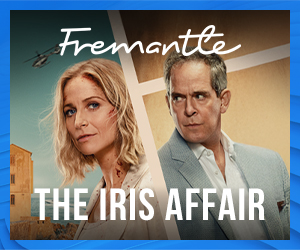
As Barack Obama opened the Smithsonian National Museum of African American History and Culture, the Smithsonian brand was making history of another kind in Asia. On 27 September, three days after the U.S. president spoke of a museum that “helps to tell a richer and fuller story of who we are”, the first Smithsonian Channel outside of North America rolled out in Singapore, bringing with it a brand “where curiosity lives, inspiration strikes and wonders never cease”.
The Smithsonian Channel’s international expansion kicks off with a single high-definition linear channel on Singapore platform StarHub, a three-year plan for rollouts across Asia Pacific in conjunction with Gregg Creevey’s Multi Channels Asia (MCA), and an open throttle on original production to bolster already strong relationships with co-production partners in the region. There’s also the learning (if not the launch – yet) of 4K nature and wildlife OTT platform, Smithsonian Earth, which debuted in the U.S. last year.
The Smithsonian Channel’s Asia schedule covers air and space, history, science, nature and pop culture. Programmes on the launch grid include Uncommon Courage: Breakout at Chosin, about Asian American Lt Chew-Een Lee; Unbelievable Flying Objects, about the ideas that didn’t quite fly in the history of aviation; and Million Dollar American Princesses, which chronicles the real life stories of American heiresses who inspired the TV drama Downton Abbey.
The Smithsonian’s programming team has a rich vein of Asia-related content to draw from, including pandas, Kimodo dragons, Japanese gardens, women in science and tsunamis... “We have been working on Asia-related topics since the day we started. This is a natural growth for us,” says David Royle, Smithsonian Networks’ executive vice president.
Recent projects include a New Zealand version of the flagship Aerial brand, which is the network’s biggest international commercial success, as well as a two-hour special on Burma and the ancient city of Bagan with Korea’s EBS....
As Barack Obama opened the Smithsonian National Museum of African American History and Culture, the Smithsonian brand was making history of another kind in Asia. On 27 September, three days after the U.S. president spoke of a museum that “helps to tell a richer and fuller story of who we are”, the first Smithsonian Channel outside of North America rolled out in Singapore, bringing with it a brand “where curiosity lives, inspiration strikes and wonders never cease”.
The Smithsonian Channel’s international expansion kicks off with a single high-definition linear channel on Singapore platform StarHub, a three-year plan for rollouts across Asia Pacific in conjunction with Gregg Creevey’s Multi Channels Asia (MCA), and an open throttle on original production to bolster already strong relationships with co-production partners in the region. There’s also the learning (if not the launch – yet) of 4K nature and wildlife OTT platform, Smithsonian Earth, which debuted in the U.S. last year.
The Smithsonian Channel’s Asia schedule covers air and space, history, science, nature and pop culture. Programmes on the launch grid include Uncommon Courage: Breakout at Chosin, about Asian American Lt Chew-Een Lee; Unbelievable Flying Objects, about the ideas that didn’t quite fly in the history of aviation; and Million Dollar American Princesses, which chronicles the real life stories of American heiresses who inspired the TV drama Downton Abbey.
The Smithsonian’s programming team has a rich vein of Asia-related content to draw from, including pandas, Kimodo dragons, Japanese gardens, women in science and tsunamis... “We have been working on Asia-related topics since the day we started. This is a natural growth for us,” says David Royle, Smithsonian Networks’ executive vice president.
Recent projects include a New Zealand version of the flagship Aerial brand, which is the network’s biggest international commercial success, as well as a two-hour special on Burma and the ancient city of Bagan with Korea’s EBS. This followed the high-budget Angkor Wat, the Land of the Gods, also with EBS. Japanese public broadcaster NHK is also a time-tested partner. The Smithsonian has also worked with public broadcaster, the Australian Broadcasting Corporation (ABC), and with NHNZ in New Zealand.
“We have only just scratched the surface,” Royle says, adding: “There are a lot of places in which we haven’t worked and we would like to start building those relationships”.
The outreach is by no means restricted to public broadcasters. Royle is also not culturally or geographically limited in any way. Diversity, he says, is “not an afterthought. It’s a fundamental part of how we work and we would like to expand that”.
The need to partner is not a fresh necessity as production costs rise, audience demands for the even-more-spectacular soar, ultra-high definition kicks in, and the whole factual genre attempts to prove it deserves its position on the dial.
Without disclosing actual production spend, Royle says Smithsonian budgets can rise to equal those of the bigger networks. “We can’t do as many of them, but we are able to step up with programmes when we feel they are merited,” he says, adding that the amount of original programming has increased every year.
Royle says the Smithsonian continues to keep its distance from trends that have in the past few years taken some factual programmers deep into reality television. “There’s a gap,” he says, “for quality, entertaining, story-led television with integrity”.
Published on 30 September 2016





























